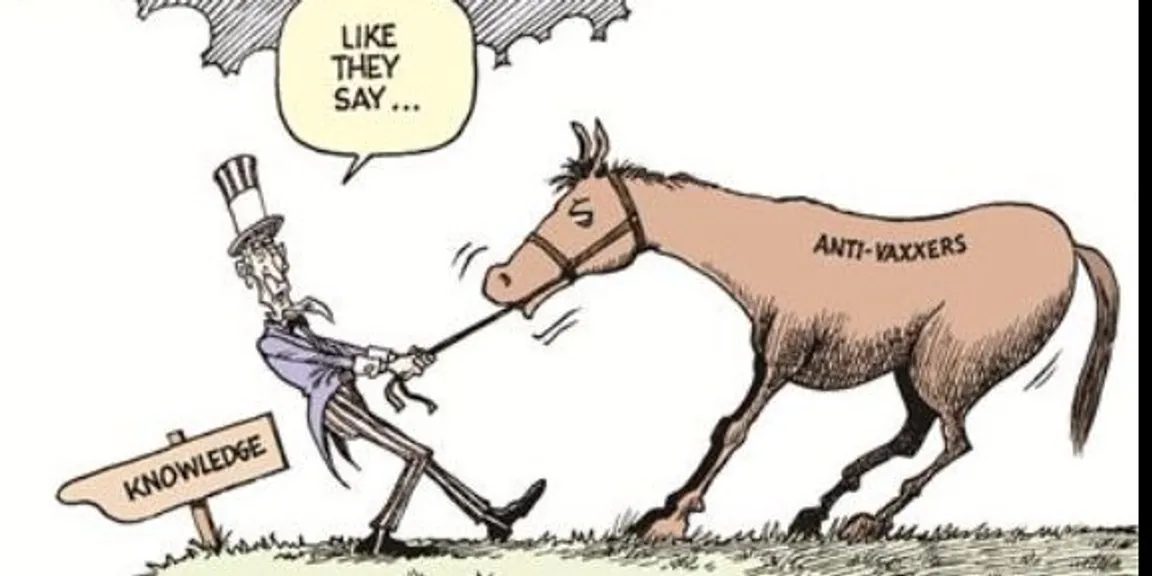

Making The Horse Drink The Water
You can make the customer click but can't make them buy.

Horses drink water when they’re thirsty, or when they’re motivated to drink it. Put some thought into it, and you’ll realise that being thirsty and being motivated to drink are two sides of the same coin.
In the parlance of consumerism where multifarious modes of marketing are dominating the web space (and mind space) like never before, this idiom has never been more relevant. B2B companies are going all out to promote their brand and pique the curiosity of consumers in innovative formats. Not surprisingly, consumers are being increasingly inundated by aggressive, in-your-face marketing strategies that are viscerally goal-driven.
Now, the big question is - if creative marketing strategies entailing a synergy of multiple marketing methodologies are making their dominant presence felt, why is it that these tactics are failing to generate more leads or sales?
Are these brands too busy trying to drive home their myopic point that they end up missing the main point – capturing the hearts of their consumers by deploying contextually relevant strategies as opposed to distracting their minds with a barrage of information?

The changing era
On their part, buyers are becoming increasingly adept at making informed choices without acquiescing to some of these seemingly nebulous tactics. The much sought after millennials, whose buying habits have shaped the marketing strategies of countless cult brands, know exactly what to trust and what to skip.
The digital age that unleashed the phenomenon of online shopping is now witnessing a growing list of fence-sitters and are unlikely to come back to purchase a product unless they are impelled by its efficacy. Here, the endeavour is not to induce thirst per se, but to identify horses that are already thirsty and put water before them.
The mismatch between marketing spend and business performance
In today’s day and age, marketing budgets are skyrocketing to yield the desired business impact. Inexorably, social media spend is increasing at a burgeoning pace because that’s where most of your consumers are. According to a CMO survey, the investment on social media platforms is likely to account for 20.9% of the marketing budgets over the next 5 years.
But again, are these investments yielding favourable results in terms of lead generation and sales?
Not quite, because a majority of these marketing efforts are simply not aligned with your business’s core objectives and/or are targeting the wrong audience with the right content (and vice-versa!). You need to get your bearings right with regard to leveraging strategies that actually work.
The buyer’s roadmap typically entails three stages:
Identification: Your prospective buyers become aware about their problem and start seeking practical solutions. This is where they begin to feel the thirst.
Exploration: They now explore the numerous solutions and determine the criteria for making a purchase. This is the stage where you pitch in by offering them ‘water.’
Selection: Your buyer opts for a solution by short listing potential vendors and making informed comparisons. In other words, they decide whether or not to drink that water.
You need to understand what’s truly important to your buyers along their journey in order to drive measurable results. To know what’s important to them, you may want to make an effort to know them personally.
Initiate relative targeting: Going back to our analogy of horses and water, think of relative targeting as means of reducing the number of potential buyers (or horses who may or may not be thirsty) to smaller groups of individuals who are most likely to buy your products. Relative targeting makes you come face-to-face with potential buyers with the greatest propensity to make the purchase, thereby unlocking key prospects.
Link your marketing goals to measurable performance: While social media metrics such as likes, shares are useful surface-level indicators of your marketing strategy’s success, you need to delve deeper to attain long-term success. All marketing activities including those on social media channels ultimately need to translate into actionable sales outcomes – be it customer acquisition/retention, more lead conversions or increased sales.
Understand the buyers’ persona: The persona of a buyer is derived by analyzing focused and actionable market insights garnered from actual customers. Understanding your buyers’ persona will encourage you to relate to them as an emotional human being, as opposed to a gateway to profit. Tailor your content and its messaging to their patterns, concerns and specific needs.
The result?
You’ll be better equipped to handhold your buyers at every stage of their journey and make them feel incentivized to make a purchase through heightened emotional engagement. Here, you can offer them water, euphemistically speaking, to rule their mind space.
Delivering content at the right time: Now is the time for you to offer the product or service that your buyers will gladly trust. Time-sensitivity is paramount because each phase has a shelf-life that tends to expire unpredictably. If you squander away these moment, you’ll end up losing a golden opportunity to induce a purchase.
Bringing it together
The symbiotic relationship between a buyer’s journey, their person, relative targeting and aligning your marketing endeavors to your core vision helps you determine the tone, style and content delivery strategy. Remember, a successful marketing strategy must address all the challenges confronted by a buyer at every stage if you want them to progress seamlessly from the identification stage to the selection stage. When that happens, the horse will happily drink the water on its own without needing any external impetus.
First published here



